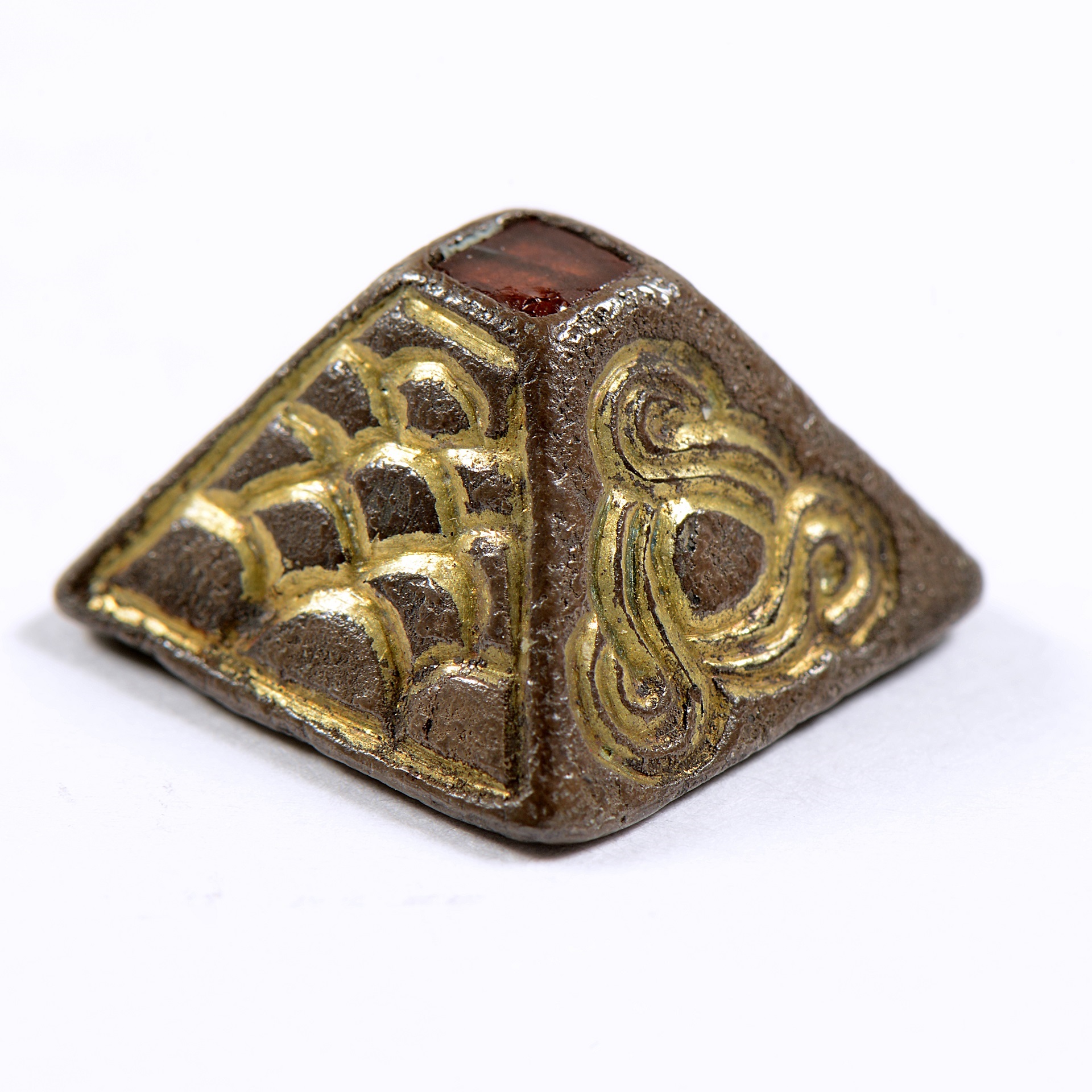Early Medieval
The small Early Medieval collection contains around 100 objects and covers the period from the end of Roman rule in Britain, through to the Norman Conquest. This was a time of great cultural and religious change and was also an important time for Durham City. In 995 AD, the Community of St. Cuthbert, fleeing from Viking raids, brought the body of their saint to Durham, and helped to establish what would become a thriving community and major pilgrimage centre. Even before this date, there is evidence that there was already an existing community in Durham, which is perhaps partly why the monks choose to settle here.
The collection shows the change in culture from the Pagan religion to Christianity. This cultural shift was also accompanied by major changes in the world of art and architecture. The collection illustrates such processes, as there is an ideological change from the weapons and jewellery found in Pagan graves and cremations, to finely carved Christian stone crosses.
One of the highlights of the collection is a silver decorative pyramid mount. The exact use of pyramid mounts is still unknown, but it seems likely that they were used to help secure a sword into its scabbard with straps. Straps like this are mentioned in the Viking sagas, where they are called ‘peace bands’. They are uncommon grave finds, and such elaborate and expensive decoration would have marked out the weapon as the property of someone of high status.

A silver Anglo-Saxon Pyramid Mount, inlaid with a single garnet and with gold decoration.

The top part of a carved stone cross.


/prod01/prodbucket01/media/durham-university/library-/museums-and-galleries/outreach/Galleriesforwebsite.jpg)